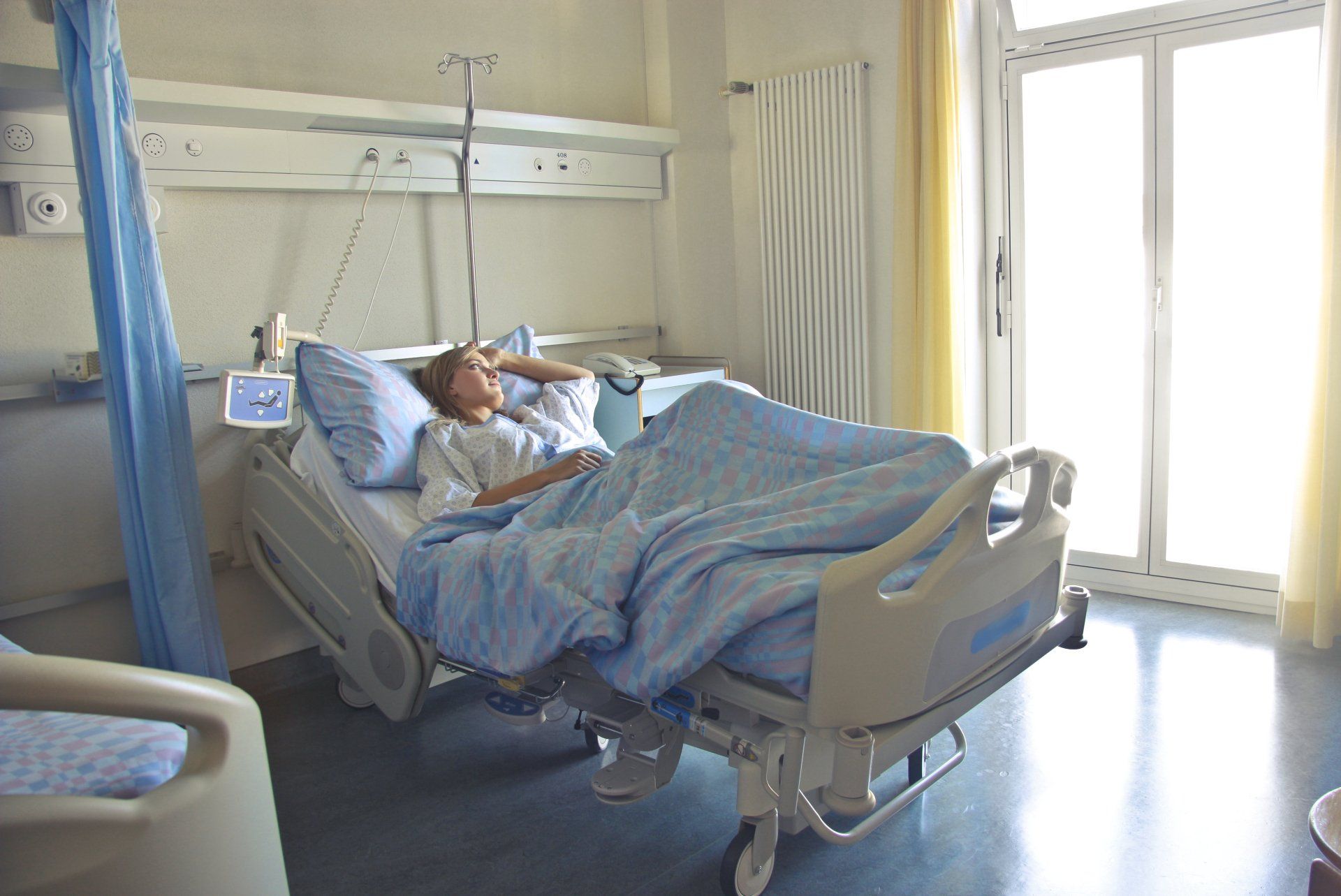The content of this blog only provides general information that may or may not apply to your personal health condition or circumstances. The opinions expressed are strictly personal opinions and not the opinions or policies of any third party, including any health care provider, employer, educational or medical institution, professional association or charitable organization. Nothing in this blog content constitutes or shall be construed as constituting medical advice of any kind whatsoever, nor is it a substitute for professional medical advice, diagnosis and treatment. If you need healthcare advice or information, please speak to your care provider.
When to go to hospital?

One of the most common questions I get asked is when should we go to the hospital? So, you may be wondering why the title of this blog post is “Why Staying at Home in Labour is a Good Idea”. Maybe the idea terrifies you or maybe you’re just wondering why you would want to stay home for labour? Just to be clear, I’m not talking about home births here, I’m talking about if you are planning a hospital birth, staying home for a significant portion of your labour.
You might be thinking but wouldn’t it be safer and more comfortable to be in hospital? Well, here’s the thing - the clinical evidence and women’s descriptions of their experiences support staying at home for as long as possible. But here’s the crux of it - when it is safe and you feel comfortable to do so.
The ‘first’ stage of labour (from labour starting to being 10cm dilated) is typically the longest stage and is often described as consisting of two phases: the latent phase (early labour) and the active phase. Early labour could last anything from a few hours to a few days and most maternity hospitals will not admit you while still in early labour so most people do spend a significant amount of time in labour at home.
There are differing thoughts around when labour changes from early labour to ‘active’ labour. Up until recently most western maternity services have described active labour as starting at 3-4cms dilation. Research by Freidman in 1955 is the basis of most units’ diagnosis of active labour at 4cm. This study looked at 500 white women’s labours and found that, for most, cervical dilation started to speed up from 4cm onwards. More recent research (Zhang et al. 2010) of a much bigger sample size (>62,000 women) found that most people did not dilate rapidly starting at 4cm. Rather, labour started to speed up around 6cm dilation. This was true for those giving birth for the first time and those who had given birth before. Before 6cm, many people went long periods without any dilation and still went on to give birth vaginally to healthy babies.
There is now a movement within the medical community for “6 to be the new 4”, so as to not diagnose active labour until 6cm. Depending on your maternity hospital or unit they may have an admissions policy based on what they deem ‘active’ labour to be. Even if your unit diagnoses active labour at 4cm it is helpful for you to know yourself that things do not tend to speed up until 6cms so if you are comfortable to remain at home longer you can do so.
Why do hospitals have policies that encourage women to stay home until in active labour? The answer is that the research shows us that the earlier you present to hospital in labour, the more likely you are to have intervention in labour or birth, without increasing positive outcomes for either you or your baby. Women who are admitted earlier are less likely to experience vaginal birth and more likely to have synthetic oxytocin augmentation, epidurals, caesarean birth and instrumental assistance. The summary being that the simple act of being in hospital increases these risks without making you or your baby safer and that is why we are encouraged to stay home during this phase.
Ok so staying home reduces the risk of interventions, why else might you like to stay at home? As mentioned, the latent phase can be long, even a few days. Having access to your home comforts and 24hr support from your birthing partner can lead to an easier and more pleasant experience. It may also help labour to progress naturally.
Let me break that down for you a bit more. Oxytocin, the love hormone, is also the contraction hormone. Oxytocin likes being warm, happy, and feeling safe and loved. In many maternity units, if admitted prior to the ‘active phase’, birthing partners are only allowed stay during visiting hours. Most people’s birthing partner is someone they care for romantically and/or who they trust implicitly. Having their ongoing support helps keep your oxytocin flowing which helps keep labour progressing. With oxytocin, we also produce our own natural endorphins which are the brain’s natural pain reliever!
Adrenaline, the stress hormone, is the enemy of oxytocin, so we need to try keep that at bay and who is better placed to know how to keep you stress free than your romantic partner or someone who really knows you and you trust completely? Your birthing partner should be someone who recognises your signs of being stressed and knows how to bring you back to a state of calmness. If your romantic partner doesn’t tick all of these boxes (and not everyone’s will) having an additional, or alternative support person can be helpful. This can be a friend, family member or a paid professional such as a doula.
So, at home we have our birthing partner’s undivided attention, what else do we have? Well, home is where the heart is right? It’s also where all of our stuff is, where everything we use daily to relax and rewind is. Most maternity units only want us to bring a small labour bag but at home you have access to so much more. You have your own bed and pillows, your own bathroom and shower or bath. You have your TV, easy access to your favourite foods and drinks, spaces to be alone and spaces to be together. If your latent phase is 12+ hours you’re going to want all this right? In addition to having all the home comforts we also have our local surroundings if we want to go for a walk or get some fresh air in the garden.
But, but, I hear you say, you still haven’t told us when we should go to the hospital! I do an exercise in my classes where there are a number of scenarios and parents-to-be have to decide whether they are going to ‘Stay at Home’, ‘Call the Hospital’ or ‘Go to the Hospital’. It can cause a lot of interesting discussion! But basically, as long as you are feeling safe and well and baby is moving as normal you can stay at home.
Regarding contraction timing, you are unlikely to be in ‘active labour’ if your contractions are shorter than 60 seconds and the gaps between them are 5 minutes or more. If your contractions are at least 60 seconds long, are coming every 5 minutes (from start of one to start of another) and they have been doing that for a least an hour you are more likely to be at about 3cm dilation. However, at 3cm there is probably still a long way to go yet so if you are happy to stay home for longer you will likely still have plenty of time to get to hospital.
If you are worried, about either yourself or your baby, then you should call or go in. You always have the option to stay home if reassured on the phone or to go home if all is well after you present. There are a few reasons why you should definitely get in touch with your care provider or go in. These include (but are not limited to):
- Any blood loss
- Concerns re: baby’s movements
- An unshakable belief that there is something wrong
- Developing a temperature
- Feeling confused, or being incoherent between contractions
- Waters breaking and not being clear and/or smelling bad
- Labour prior to 37 weeks gestation
- Desire for additional pain relief
Or any other reason where you no longer wish to be at home and wish to be cared for in the hospital. Remember, we want to keep adrenaline at bay so no point staying home if that’s not where you are feeling safest.
In summary, if you are hoping to have a vaginal birth, and for things to go as smoothly as possible, then staying home for as long as you feel safe will support this process.
Pregnancy and childbirth can be an overwhelming and sometimes challenging experience. It's natural to feel anxious or nervous about giving birth, but positive affirmations can help ease your mind and bring you closer to a peaceful and joyful birth.



